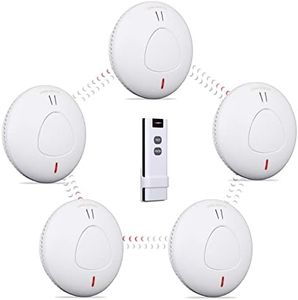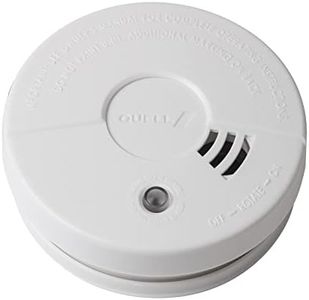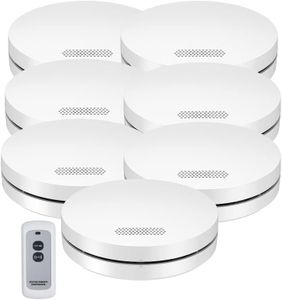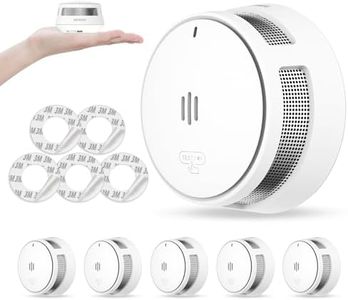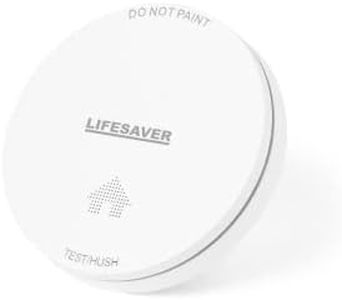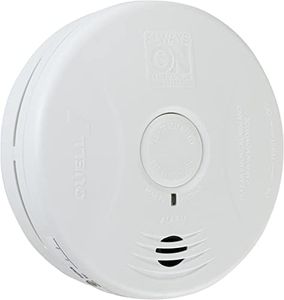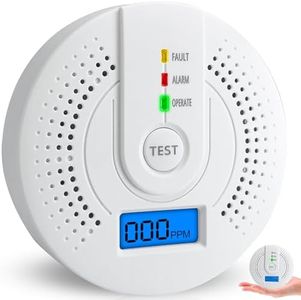We Use CookiesWe use cookies to enhance the security, performance,
functionality and for analytical and promotional activities. By continuing to browse this site you
are agreeing to our privacy policy
10 Best Smoke Alarms
From leading brands and best sellers available on the web.Buying Guide for the Best Smoke Alarms
Choosing the right smoke alarm is crucial for keeping your home and loved ones safe. Smoke alarms are designed to detect smoke and warn you early, giving you time to act in case of a fire. The market offers different types and features, so it's important to understand what each offers and match them to your specific living environment and needs. Focus on how and where you will use the alarm, the kind of building you have, and who lives in your home to ensure you find the best fit.Detection Technology (Ionization vs. Photoelectric)Detection technology refers to how the smoke alarm senses smoke. Ionization alarms are faster at detecting fast-flaming fires, while photoelectric alarms are quicker at sensing smoldering fires that may smolder for hours before bursting into flames. Some alarms combine both technologies for broad coverage. If you want to protect against all common fire types, a dual-sensor or combination alarm is recommended, but you might choose one or the other based on what kind of fire risks are more likely in your home.
Power Source (Battery vs. Hardwired)The power source determines how the smoke alarm stays powered. Battery-powered alarms are easy to install and can be placed almost anywhere, but their batteries need regular replacement or use a sealed long-life battery. Hardwired alarms connect directly to your home's wiring and often come with battery backup for extra reliability. Choose battery-powered if you need flexibility or quick installation, and hardwired if you want added security and your building allows for that installation type.
InterconnectivityInterconnectivity means the ability for multiple alarms to communicate with each other. If one alarm detects smoke, all connected alarms sound an alert. This is especially helpful in larger homes or multi-story buildings, ensuring that everyone gets warned quickly even if the danger is far from them. If your home is big or has multiple sleeping areas, alarms with interconnectivity can provide more complete protection.
Alarm Volume and AlertsAlarm volume measures how loud the alarm is when triggered, usually in decibels. Some alarms also provide voice alerts or different sounds for smoke and carbon monoxide. Higher volume ensures people are woken up from sleep or alerted from a distance. When choosing, consider if you have people with hearing difficulties or if you need to be warned across several rooms or floors.
Maintenance Features (Test and Silence Buttons, Battery Indicators)Maintenance features make it easier to keep your alarm in working order. Test buttons let you check functionality, silence buttons help mute nuisance alarms (like from cooking), and battery indicators warn you when batteries are low. Alarms that are simple to test and maintain make it more likely you'll keep them ready to protect you. If you want a low-maintenance option, look for alarms with clear indicators, long-lasting batteries, and helpful silence features.
Additional Capabilities (Carbon Monoxide Detection, Smart Features)Some smoke alarms also detect carbon monoxide, a dangerous gas you can’t see or smell, and others offer smart features like phone alerts or connection with home security systems. These added features can enhance safety and convenience, especially if you want more comprehensive protection or the ability to monitor your home remotely. Think about the specific risks in your home and whether extra convenience from smart features fits your lifestyle.
